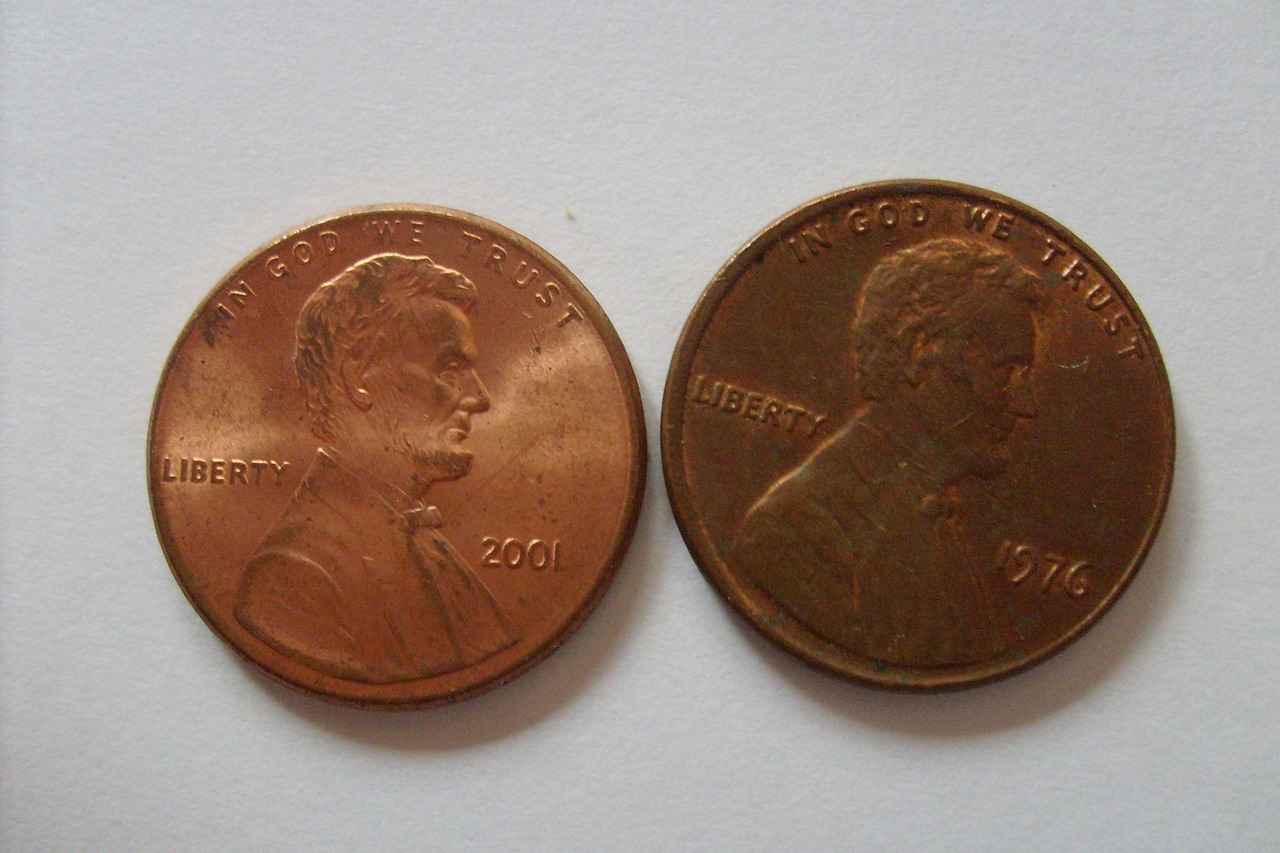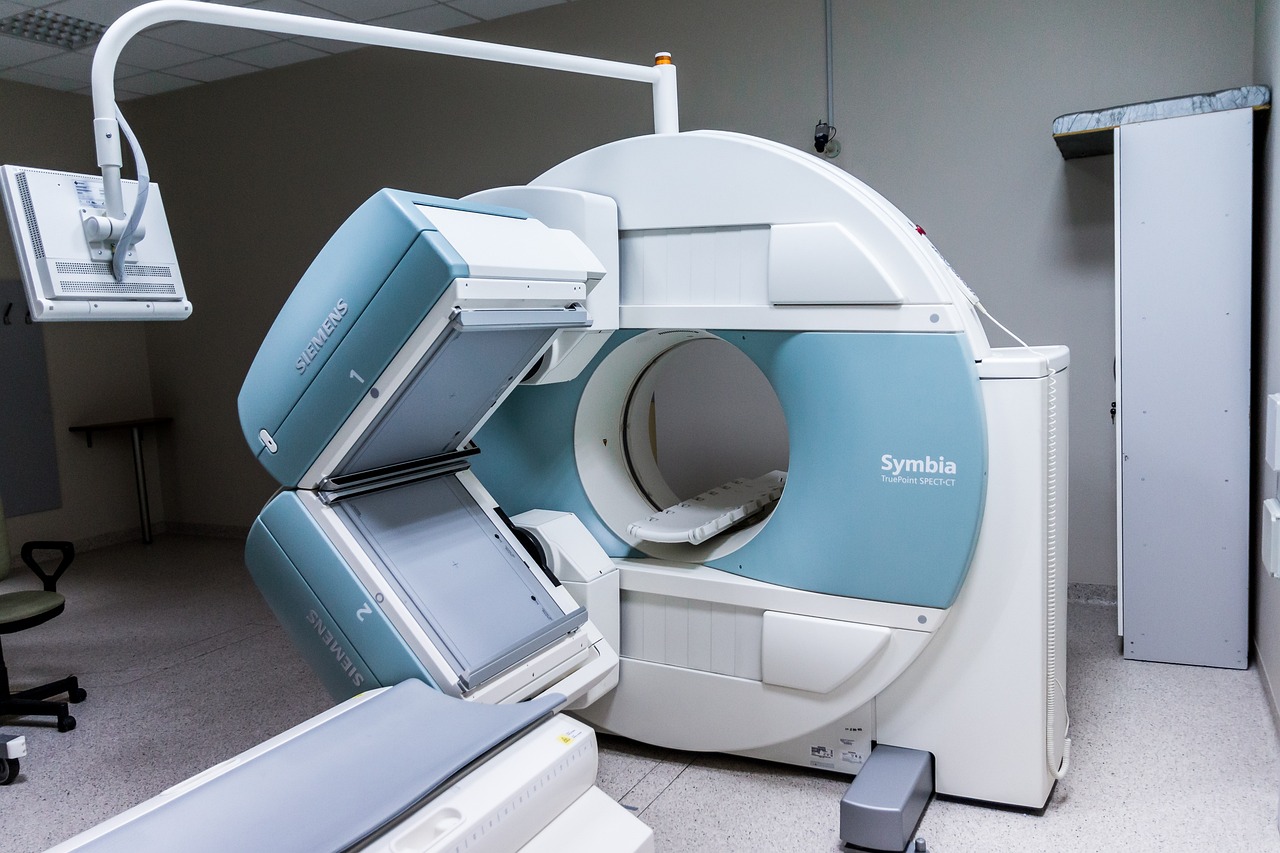Circumcision is a procedure that has garnered attention for various reasons, from cultural to medical. Understanding the costs associated with circumcision is crucial for individuals considering this option. This article delves into the intricacies of circumcision pricing, examining factors that influence costs, insurance coverage, and regional variations.
The average cost of circumcision can range significantly, typically falling between $300 to $3,000. The price is influenced by factors such as the type of procedure (traditional vs. laser), the healthcare provider’s experience, and the location of the service. For instance, urban areas may exhibit higher costs compared to rural settings due to the increased overhead of healthcare facilities.
Several elements can impact the overall cost of circumcision:
- Type of Facility: Hospitals generally charge more than outpatient clinics.
- Surgeon Expertise: Highly experienced surgeons may command higher fees.
- Type of Procedure: Different techniques can lead to price variations.
Insurance coverage plays a pivotal role in determining out-of-pocket expenses for circumcision. Many insurance plans may cover the procedure if deemed medically necessary. However, it is essential to check the specifics of your policy, as coverage can vary widely.
Not all insurance plans provide coverage for circumcision, especially for adults. Some plans may cover it for infants but not for older children or adults. It is vital to consult with your insurance provider to understand what is included in your plan.
Medicaid and Medicare have specific guidelines regarding circumcision. Typically, Medicaid may cover the procedure for infants under certain conditions, while Medicare coverage is generally limited. It is advisable to review the eligibility criteria for these programs.
Geographical location significantly influences circumcision costs. For example, the procedure may be more expensive in metropolitan areas compared to smaller towns. A survey of prices across various states indicates that costs can vary by as much as $1,000 based on regional healthcare pricing structures.
Beyond the procedure itself, patients should consider additional expenses:
- Pre-operative Consultations: Initial assessments can add to the total cost.
- Post-operative Care: Follow-up visits to ensure proper healing may incur fees.
- Medications: Pain relief and antibiotics can also contribute to overall expenses.
Patients should be cautious of potential hidden fees that may arise during the circumcision process. These could include charges for anesthesia, facility fees, or unexpected complications that require additional treatment.
Proper aftercare is essential for recovery after circumcision. Patients should budget for follow-up visits and any necessary care, which can vary based on individual healing and complications.
For those facing financial constraints, various assistance options are available. Some clinics offer sliding scale fees based on income, while others may have payment plans to ease the financial burden.
Several non-profit organizations provide financial assistance for medical procedures, including circumcision. These resources can help cover costs for eligible individuals, making the procedure more accessible.
Many clinics offer flexible payment plans to help patients manage the costs of circumcision. Understanding these options can significantly alleviate financial stress and make the procedure more feasible.

What Are the Average Costs of Circumcision?
When considering circumcision, understanding the average costs associated with the procedure is crucial for effective budgeting. The prices can vary significantly based on several factors, including geographic location, the type of procedure chosen, and the healthcare provider performing the circumcision. This article delves into the average costs of circumcision, providing essential insights for prospective patients.
The costs of circumcision can range widely, typically falling between $150 and $3,000. Factors influencing this variation include:
- Location: Urban areas often have higher costs compared to rural regions.
- Type of Procedure: Traditional surgical methods may cost more than less invasive techniques.
- Healthcare Provider: Experienced surgeons or reputable clinics may charge premium rates.
For example, in metropolitan areas, the price might average around $1,000, while smaller towns could see costs closer to $300. Additionally, some facilities may offer package deals that include pre-operative consultations, which can affect the overall price.
Several key factors can impact the overall cost of circumcision:
- Facility Type: Costs can differ significantly between hospitals and outpatient clinics.
- Surgeon Expertise: Highly experienced surgeons may charge more due to their specialized skills.
- Insurance Coverage: Patients with insurance may find their costs reduced, depending on their policy specifics.
Insurance coverage plays a significant role in determining out-of-pocket expenses for circumcision. Many insurance policies may cover the procedure if deemed medically necessary, significantly lowering the financial burden for patients. However, it’s essential to understand the specifics of your policy, as coverage can vary widely.
Not all insurance plans provide coverage for circumcision, particularly for adults. Checking with your provider is crucial to understand what is included in your plan. Some plans may cover circumcision for infants but not for older children or adults.
Medicaid and Medicare have specific guidelines regarding circumcision. Generally, Medicaid may cover the procedure for infants under certain conditions, while Medicare coverage may be more limited. Understanding these guidelines is essential for those relying on government assistance.
As mentioned earlier, circumcision costs can vary widely across different regions. For instance, states like California and New York tend to have higher average costs compared to states in the Midwest. This regional disparity is often influenced by local healthcare market dynamics and cost of living.
Beyond the initial procedure, patients should consider additional costs such as:
- Pre-operative Consultations: These visits may incur fees that add to the total cost.
- Post-operative Care: Follow-up visits and any necessary medications can also contribute to expenses.
Patients should be aware of potential hidden fees that may arise during the circumcision process. These can include charges for anesthesia, facility fees, and other related services that may not be initially disclosed.
Proper aftercare is critical for recovery after circumcision. Patients should anticipate costs associated with follow-up visits and any necessary care post-surgery, which can vary based on the healthcare provider’s policies.
For those facing financial constraints, various assistance options are available to help cover circumcision costs. Some clinics offer payment plans or financing options to ease the burden, making the procedure more accessible.
Several non-profit organizations provide financial assistance for medical procedures, including circumcision. These organizations can be a valuable resource for individuals seeking help with costs.
Many clinics offer flexible payment plans to help patients manage the costs of circumcision. Understanding these options can significantly ease the financial burden, allowing for more manageable payments over time.

What Factors Influence the Cost of Circumcision?
Circumcision is a procedure that can vary widely in cost depending on several factors. Understanding these factors is essential for individuals considering the procedure. Below, we explore the various elements that can influence the overall cost of circumcision.
The cost of circumcision is not a one-size-fits-all figure. Several key factors play a significant role in determining how much you might pay for this procedure:
- Type of Facility: The facility where the procedure is performed can greatly affect the cost. Hospitals typically charge more than outpatient clinics due to higher overhead costs. Additionally, private surgical centers may offer competitive pricing but can vary based on location and services offered.
- Surgeon Expertise: The experience and qualifications of the surgeon performing the circumcision can also impact the price. Highly experienced surgeons or those with specialized training may charge more for their services, reflecting their skill level and reputation.
- Geographic Location: The region where you live can influence circumcision costs. Urban areas often have higher healthcare costs compared to rural regions. It’s essential to research local pricing to get an accurate estimate of what to expect.
- Type of Procedure: There are different methods of circumcision, including traditional surgical techniques and newer, minimally invasive options. The choice of method can affect the price, with some techniques being more expensive due to the technology or expertise required.
- Insurance Coverage: If you have health insurance, your plan may cover part or all of the circumcision costs. However, coverage can vary significantly between plans, so it’s crucial to check with your insurance provider to understand your financial responsibility.
- Pre-Operative and Post-Operative Care: Additional costs may arise from pre-operative consultations and post-operative care, including follow-up visits and medications. These potential expenses should be factored into your overall budget.
Each of these factors contributes to the total cost of circumcision, making it essential for individuals to conduct thorough research and consult with healthcare providers to obtain accurate estimates. Understanding these elements can help you make informed decisions regarding the procedure.
In conclusion, while the cost of circumcision can vary widely based on several influencing factors, being well-informed can empower individuals to navigate their options effectively. Consider reaching out to multiple providers to compare costs and services, ensuring you find the best solution for your needs.
How Does Insurance Impact Circumcision Costs?
Understanding the financial implications of circumcision is essential for anyone considering the procedure. Insurance coverage plays a pivotal role in determining out-of-pocket expenses, and being aware of your policy’s specifics can greatly influence your financial responsibility.
When it comes to circumcision, the costs can vary widely depending on several factors, including insurance coverage. Many individuals may find themselves questioning how much they will need to pay out of pocket after insurance has been applied. The first step in this process is to thoroughly review your health insurance policy to understand what is covered.
- Policy Details: Not all insurance plans provide coverage for circumcision, particularly for adults. It’s crucial to check whether your plan includes this procedure as a covered benefit.
- Pre-authorization: Some insurance companies may require pre-authorization before covering the costs of circumcision. This means you may need to provide additional documentation or justification for the procedure.
- Network Providers: Costs can also vary depending on whether you choose an in-network or out-of-network provider. In-network providers typically result in lower out-of-pocket expenses.
For those with Medicaid or Medicare, the coverage for circumcision can differ significantly. Medicaid often covers circumcision for infants but may have restrictions for older children or adults. Medicare, on the other hand, generally does not cover circumcision unless it is deemed medically necessary. Therefore, understanding the guidelines of these programs is essential for budgeting.
Furthermore, the financial responsibility of the patient can change based on the specific circumstances surrounding the procedure. For instance, if circumcision is performed due to a medical condition, such as phimosis or recurrent infections, there might be a stronger case for coverage under your insurance plan.
The extent of coverage can vary not only by the type of insurance plan but also by the state in which you reside. Some states have regulations that require certain insurance plans to cover circumcision, while others do not. It is advisable to contact your insurance provider directly to get the most accurate information regarding your coverage options.
- Individual Plans: Private insurance plans may offer different levels of coverage compared to employer-sponsored plans.
- State Regulations: Researching your state’s regulations can provide insights into what is typically covered.
In addition to understanding your insurance policy, it’s also beneficial to communicate with your healthcare provider’s office regarding the costs associated with the procedure. Many clinics are willing to provide a detailed breakdown of costs, including what will be covered by insurance and what you may need to pay out of pocket.
Ultimately, being proactive in understanding your insurance coverage can lead to significant savings and help you manage your financial responsibilities related to circumcision. It is always recommended to gather all necessary information and consult with both your insurance provider and healthcare professional to ensure you are fully informed before proceeding with the procedure.
Are There Differences in Coverage by Insurance Plans?
Circumcision is a procedure that can be necessary for various medical, cultural, or personal reasons. However, when considering this option, understanding the financial implications is crucial, particularly regarding insurance coverage. This question is essential for individuals contemplating the procedure.
Insurance coverage for circumcision can vary widely depending on the provider and the specific plan. It’s important to note that not all insurance plans cover circumcision, especially for adults. Many plans may only cover the procedure for infants or children when deemed medically necessary. This distinction can lead to unexpected out-of-pocket costs for adult patients.
Insurance companies often base their coverage policies on medical necessity. For infants and young children, circumcision is sometimes considered a preventive measure against certain health issues, such as urinary tract infections. However, for adults, many insurers may classify circumcision as an elective procedure, which typically falls outside the scope of covered services. Therefore, it’s crucial for patients to check with their insurance provider to understand the specifics of their coverage.
- Policy Details: Review your insurance policy to see if circumcision is mentioned.
- Medical Necessity: Ask your provider if they consider your case medically necessary.
- Pre-authorization: Inquire if pre-authorization is required for coverage.
- Out-of-Pocket Costs: Understand any deductibles, co-pays, or co-insurance that may apply.
In the United States, some states have specific regulations regarding insurance coverage for circumcision. For instance, Medicaid programs may have different rules about coverage for adults versus children. This can affect low-income individuals seeking the procedure. It’s advisable to research state-specific policies or consult with a healthcare advocate for clarity.
If your insurance plan denies coverage for circumcision, it’s not the end of the road. Patients can appeal the decision by providing additional documentation or medical records that support the necessity of the procedure. Engaging with a patient advocate or a representative from your insurance company can also help clarify the appeal process.
For those without coverage or facing high out-of-pocket costs, several financial options may be available:
- Payment Plans: Many clinics offer flexible payment plans that allow patients to spread the cost over time.
- Health Savings Accounts (HSAs): If you have an HSA, you can use these funds for medical expenses, including circumcision.
- Non-Profit Support: Some non-profit organizations provide financial assistance for medical procedures, including circumcision.
In conclusion, understanding the nuances of insurance coverage for circumcision is vital for budgeting and planning. By checking with your insurance provider and exploring available financial options, you can make informed decisions regarding this procedure.
What About Medicaid and Medicare Coverage?
When considering circumcision, understanding the financial implications is crucial, especially in relation to Medicaid and Medicare coverage. These government programs have distinct guidelines that dictate how they handle the costs associated with this procedure. This section will delve into the specifics of how these programs approach circumcision coverage, ensuring you have the information necessary to navigate your options effectively.
Medicaid is a state and federal program that provides health coverage to eligible low-income individuals. Coverage for circumcision under Medicaid can vary significantly from one state to another. In many cases, Medicaid will cover circumcision if it is deemed medically necessary. This typically includes circumstances such as:
- Medical Conditions: Conditions like phimosis or recurrent urinary tract infections may warrant a medically necessary circumcision.
- Age Considerations: Some states may cover circumcision for infants but not for older children or adults.
It’s essential for individuals to check with their state’s Medicaid office to understand the specific criteria and documentation required for coverage. Additionally, understanding the application process can help streamline access to necessary medical services.
Medicare, primarily serving individuals aged 65 and older, has a different stance on circumcision. Generally, Medicare does not cover circumcision unless it is performed for medical reasons. For example:
- Preventive Health: If circumcision is recommended to prevent serious health issues, Medicare may consider covering it.
- Documented Medical Need: Similar to Medicaid, documentation from a healthcare provider is crucial to justify the procedure.
For patients on Medicare, it is advisable to consult with their healthcare provider to discuss the necessity of the procedure and obtain the required documentation for potential coverage.
When exploring circumcision coverage through Medicaid or Medicare, it is vital to ask the right questions:
- What are the eligibility requirements? Understanding what qualifies as medically necessary can save time and resources.
- What documentation is needed? Knowing what paperwork to prepare can streamline the approval process.
- Are there any out-of-pocket costs? Even with coverage, patients should be aware of potential co-pays or deductibles.
Contacting customer service representatives from Medicaid or Medicare can provide clarity on specific situations and help individuals make informed decisions.
For those seeking further assistance, several resources can provide guidance:
- State Medicaid Offices: Each state has its own Medicaid office that can offer specific information regarding coverage.
- Medicare Resources: The official Medicare website contains extensive information about covered procedures and eligibility.
- Healthcare Providers: Consulting with a healthcare provider can help clarify the medical necessity of circumcision.
By leveraging these resources, patients can better understand their options and navigate the complexities of circumcision coverage under Medicaid and Medicare.
What Are the Costs of Circumcision by Region?
Circumcision costs can vary significantly depending on geographic location. Understanding these regional differences is essential for individuals considering the procedure, as it can help in budgeting and planning. This section delves into how various factors, such as local healthcare systems, demand, and economic conditions, influence the pricing of circumcision.
The cost of circumcision is not uniform across the country or even within the same state. In urban areas, where the cost of living is generally higher, prices can be significantly elevated compared to rural regions. For instance, in metropolitan cities, the average cost of circumcision can range from $1,000 to $3,000, while in smaller towns, the price might drop to $500 to $1,500. This disparity is often attributed to the higher overhead costs associated with operating in densely populated areas.
Another factor influencing circumcision costs by region is the type of facility performing the procedure. Hospitals typically charge more than outpatient clinics or private practices. In regions with a high concentration of hospitals, patients might find that the costs are considerably higher. Conversely, clinics in less populated areas might offer competitive pricing to attract patients.
Demand for circumcision can also vary by region, influencing costs. In areas where circumcision is a common practice, there may be more providers offering competitive rates. In contrast, regions where circumcision is less common may see higher prices due to limited options. For example, in some parts of the Midwest, circumcision rates are lower, which can lead to increased costs due to fewer practitioners.
Beyond the base price of the procedure, patients should be aware of potential additional costs that may arise based on their location. These can include:
- Pre-operative consultations: Some facilities may charge a fee for initial consultations, which can vary by region.
- Post-operative care: Follow-up visits and care instructions may incur extra charges, particularly in urban settings.
- Medications: Prescriptions for pain management or antibiotics may also add to the overall cost.
Insurance coverage for circumcision can differ significantly based on the region and the specific insurance plan. In some areas, insurance may cover the procedure for infants but not for adults. Patients should always verify with their insurance provider to understand their coverage specifics, as regional healthcare policies can greatly influence out-of-pocket expenses.
| Region | Average Cost |
|---|---|
| Urban Areas | $1,000 – $3,000 |
| Suburban Areas | $800 – $2,000 |
| Rural Areas | $500 – $1,500 |
In summary, the costs of circumcision are influenced by a multitude of factors, including geographic location, facility type, and local demand. By understanding these elements, individuals can make informed decisions regarding their circumcision options.

What Are the Additional Costs Associated with Circumcision?
Circumcision is a significant decision that often involves various costs beyond the procedure itself. Understanding these additional expenses is crucial for anyone considering this surgery. In this section, we will explore the various costs associated with circumcision, including pre-operative consultations, post-operative care, and medications.
When budgeting for circumcision, it is essential to consider not only the surgical fee but also the additional costs that may arise. These costs can vary significantly based on the healthcare provider, location, and individual health circumstances.
- Pre-Operative Consultations: Before undergoing circumcision, patients typically need to attend a pre-operative consultation. This visit allows the surgeon to assess the patient’s health, discuss the procedure, and address any concerns. The cost of this consultation can range from $100 to $300, depending on the provider.
- Post-Operative Care: After the procedure, patients require follow-up visits to ensure proper healing. These visits are crucial for monitoring recovery and addressing any complications. The costs for follow-up appointments can add an additional $50 to $150 per visit.
- Medications: Pain management is an important aspect of recovery. Patients may need to purchase medications such as pain relievers or antibiotics to prevent infection. The cost of medications can vary, but it typically ranges from $20 to $100, depending on the prescriptions provided.
In addition to the expected costs, patients should be aware of potential hidden fees that may arise during the circumcision process. These can include:
- Anesthesia Fees: If general anesthesia is required, this can significantly increase the overall cost. Anesthesia fees can range from $200 to $800.
- Facility Fees: Depending on whether the procedure is performed in a hospital or an outpatient clinic, facility fees may apply. These can vary widely, with costs between $500 and $2,000.
Proper aftercare is essential for a smooth recovery after circumcision. Patients should budget for:
- Follow-Up Appointments: As mentioned earlier, follow-up visits are crucial for monitoring healing. Patients should expect to schedule at least one or two follow-up appointments, costing between $50 and $150 each.
- Wound Care Supplies: Patients may need to purchase special dressings or ointments to care for the surgical site. These supplies can cost around $10 to $50.
In summary, when considering circumcision, it is vital to account for all potential costs, including pre-operative consultations, post-operative care, medications, and any hidden fees. By understanding these additional expenses, patients can better prepare financially for the procedure and ensure a smoother recovery process.
Are There Hidden Fees to Consider?
When considering the cost of circumcision, it is crucial for patients to be aware of potential hidden fees that may arise throughout the process. These fees can significantly impact the overall financial burden associated with the procedure, making it essential to understand all the possible costs involved.
Hidden fees refer to unexpected charges that may not be included in the initial price quote for the circumcision procedure. These can arise from various aspects of the surgical process, including:
- Consultation Fees: Many healthcare providers charge for pre-operative consultations. This fee can vary widely based on the provider’s location and expertise.
- Anesthesia Costs: Depending on the type of anesthesia used, additional fees may apply. General anesthesia typically incurs higher costs than local anesthesia.
- Facility Fees: If the procedure is performed in a hospital rather than a clinic, facility fees could be significantly higher.
- Post-Operative Care: Follow-up visits and any necessary medications for recovery can add to the total cost.
Understanding hidden fees is vital for several reasons:
- Budgeting: Being aware of all potential costs allows patients to budget more effectively, ensuring they are financially prepared for the procedure.
- Financial Planning: Knowing the total expected costs can help patients make informed decisions about their healthcare options.
- Avoiding Surprises: Unexpected charges can lead to financial strain, which can be avoided with proper research and communication with healthcare providers.
To avoid surprises, patients should take proactive steps to identify potential hidden fees:
- Ask Questions: During consultations, patients should inquire about all possible charges, including those for anesthesia, facility use, and post-operative care.
- Review Insurance Policies: Understanding what your insurance covers can provide clarity on out-of-pocket costs and any additional fees that may arise.
- Get a Written Estimate: Requesting a detailed, written estimate from the healthcare provider can help outline all expected costs, minimizing the risk of hidden fees.
While some fees may be unavoidable, there are strategies to minimize their impact:
- Shop Around: Comparing prices from different providers can help identify more affordable options.
- Consider Payment Plans: Some clinics offer payment plans that can ease the financial burden of unexpected fees.
- Utilize Financial Assistance: Patients should explore financial assistance programs or non-profit organizations that may help cover costs.
In conclusion, being aware of potential hidden fees associated with circumcision is crucial for effective financial planning. By asking the right questions and conducting thorough research, patients can mitigate unexpected costs and make informed decisions regarding their healthcare.
What Are the Costs of Aftercare and Follow-Up Visits?
Proper aftercare is essential for a successful recovery following circumcision. Understanding the costs associated with follow-up visits and necessary care post-surgery is crucial for patients and their families. This section will delve into the various expenses that may arise during the aftercare phase.
Aftercare plays a pivotal role in ensuring that the surgical site heals properly and that any potential complications are addressed promptly. Inadequate aftercare can lead to infections, prolonged discomfort, and other serious issues, making it vital to allocate resources for this phase of recovery.
Follow-up visits are typically scheduled within a week or two after the procedure. The costs of these visits can vary based on several factors:
- Location: Prices may differ depending on whether the follow-up occurs in a hospital or a private clinic.
- Provider Expertise: Experienced surgeons may charge higher fees for follow-up appointments.
- Insurance Coverage: Depending on the insurance plan, some or all of the costs may be covered.
On average, patients can expect to pay between $50 to $200 for each follow-up visit.
In addition to follow-up visits, there are other potential costs associated with aftercare:
- Medications: Pain relievers or antibiotics may be prescribed, adding to the overall expense.
- Dressings and Supplies: Patients may need to purchase sterile dressings or ointments to care for the surgical area.
- Emergency Visits: In the event of complications, a visit to the emergency room may be necessary, which can incur significant costs.
Patients should explore options to minimize aftercare expenses:
- Insurance Verification: Always check with your insurance provider to understand the extent of coverage for follow-up visits and medications.
- Payment Plans: Some clinics offer flexible payment plans to help manage costs.
- Community Resources: Look for local health programs or non-profits that may offer assistance for post-operative care.
During follow-up appointments, healthcare providers will:
- Assess the healing process of the surgical site.
- Address any concerns or complications the patient may have.
- Provide guidance on ongoing care and any necessary lifestyle adjustments.
Patients should come prepared with questions and concerns to ensure they receive comprehensive care and support during recovery.
In summary, while the costs associated with aftercare and follow-up visits can add up, investing in proper recovery is crucial for long-term health and well-being. Understanding these expenses allows patients to plan accordingly and ensure they receive the necessary care.

What Are the Financial Assistance Options for Circumcision?
When it comes to medical procedures like circumcision, the associated costs can be a significant concern for many families. Fortunately, there are various financial assistance options available to help alleviate the burden of these expenses. This section will delve into the resources and programs that can aid in covering circumcision costs, ensuring that financial constraints do not hinder access to necessary healthcare.
For those who find themselves facing financial difficulties, understanding the available assistance options is crucial. Here are some of the primary avenues to explore:
- Non-Profit Organizations: Several non-profit organizations focus on helping families cover medical expenses. These organizations often provide grants or financial aid specifically for medical procedures, including circumcision. It is advisable to research local and national non-profits that may offer support.
- Government Assistance Programs: Programs such as Medicaid may provide coverage for circumcision under specific circumstances. It is essential to check eligibility requirements and coverage details to determine if you qualify for assistance through these programs.
- Payment Plans: Many clinics and hospitals offer flexible payment plans that allow patients to spread the cost of circumcision over time. This option can significantly ease the financial burden, making the procedure more affordable.
- Health Savings Accounts (HSAs): If you have an HSA, you can use these funds to pay for circumcision costs. HSAs are tax-advantaged accounts that can help manage medical expenses.
- Community Health Resources: Some community health centers provide services on a sliding scale based on income. These centers may offer circumcision at reduced rates, making it more accessible for families in need.
Indeed, various non-profit organizations are dedicated to assisting families with medical costs. Organizations such as the Children’s Health Fund and HealthWell Foundation may offer financial assistance for circumcision, especially for children from low-income households. It is beneficial to reach out to these organizations directly to inquire about specific eligibility criteria and application processes.
Many healthcare providers understand the financial strain that medical procedures can impose. As a result, numerous clinics offer payment plans that allow families to pay for circumcision in manageable installments. These plans can vary significantly, so it is crucial to discuss options with your healthcare provider before proceeding with the surgery. Some clinics may also offer discounts for upfront payments or for families with multiple procedures.
Accessing financial assistance for circumcision involves a few steps:
- Research local non-profits and community health organizations that provide financial aid.
- Contact your insurance provider to understand what coverage options may be available.
- Inquire with your healthcare provider about payment plans and any potential discounts.
- Explore government assistance programs and check eligibility criteria.
By taking these proactive steps, families can find the support they need to make circumcision more affordable and accessible.
Ultimately, financial assistance options can significantly ease the stress associated with circumcision costs. Understanding and utilizing these resources ensures that families can prioritize health without compromising financial stability.
Are There Non-Profit Organizations Offering Help?
When it comes to medical procedures like circumcision, the costs can often be a significant concern for many individuals and families. Fortunately, there are non-profit organizations that aim to alleviate some of this financial burden by providing financial assistance specifically for circumcision and other medical needs. This section will explore various resources available to those seeking help.
Different types of non-profit organizations offer financial support for medical procedures. These may include:
- Health-focused charities: Organizations dedicated to specific health issues often provide grants or financial aid for related medical procedures.
- Community health programs: Local community organizations may offer assistance based on income levels and specific needs.
- Religious organizations: Some faith-based groups provide funding for medical expenses, including circumcision, especially for families in need.
Finding the right non-profit organization can be challenging, but there are several strategies you can employ:
- Online research: Utilize search engines to find local and national organizations that provide financial assistance for circumcision.
- Social media: Many non-profits promote their services through social media platforms. Following these organizations can keep you updated on available aid.
- Community outreach: Contact local health clinics or hospitals; they often have information about non-profits that assist with medical costs.
Eligibility for assistance can vary widely among organizations. Common requirements may include:
- Income limits: Many organizations require applicants to demonstrate financial need, often determined by household income.
- Residency: Some programs may only be available to residents of specific areas or states.
- Medical necessity: Proof of medical necessity for the circumcision procedure may be required.
The application process typically involves several steps:
- Gather documentation: Collect necessary documents, including proof of income, medical records, and identification.
- Complete application forms: Fill out the application forms provided by the organization, ensuring all information is accurate and complete.
- Follow up: After submission, it’s essential to follow up with the organization to check on the status of your application.
In addition to non-profit organizations, consider exploring other resources:
- Government programs: Some government assistance programs may cover medical costs, including circumcision.
- Payment plans: Many healthcare providers offer payment plans that allow patients to spread out the costs over time.
- Crowdfunding: Online crowdfunding platforms can be an effective way to raise funds for medical expenses.
In conclusion, while the financial burden of circumcision can be daunting, various non-profit organizations and resources are available to help. By understanding the types of assistance available and the application process, individuals and families can find the support they need to proceed with this important procedure.
What Payment Plans Do Clinics Offer?
Circumcision, while often considered a routine procedure, can involve significant financial implications for many patients. Understanding the various payment plans offered by clinics can make this process less daunting and more manageable. This section will delve into the types of payment options available and how they can assist patients in navigating the costs associated with circumcision.
Many clinics recognize that the cost of circumcision can be a burden and therefore offer flexible payment plans to accommodate different financial situations. These plans often allow patients to pay in installments rather than a lump sum, making it easier to budget for the procedure.
- Installment Plans: Clinics typically provide the option to break down the total cost into manageable monthly payments. This can vary from a few months to several years, depending on the total cost and the clinic’s policies.
- Sliding Scale Fees: Some clinics may offer a sliding scale based on income, allowing patients with lower incomes to pay a reduced fee.
- Deferred Payment Plans: In certain cases, clinics may allow patients to defer payments until after the procedure, which can alleviate immediate financial pressure.
For patients with insurance, understanding how their plan interacts with the clinic’s payment options is crucial. Some clinics may work directly with insurance companies to set up payment plans that incorporate insurance coverage, while others may require full payment upfront, with reimbursement sought later from the insurer.
In addition to payment plans, many clinics also provide information about financial assistance programs. These programs can offer grants or subsidies to patients who qualify, further reducing the overall cost of circumcision. It is advisable for patients to inquire about these resources when discussing their options with clinic staff.
When considering payment plans, patients should also be aware of their financial responsibility. This includes understanding any potential additional costs that may arise, such as consultation fees, anesthesia, and follow-up care. Being fully informed helps patients avoid unexpected expenses and allows for better financial planning.
Before committing to a procedure, it is vital to have a thorough consultation with the healthcare provider. During this meeting, patients should ask detailed questions about the payment plans, including interest rates, payment deadlines, and any penalties for missed payments. Transparency is key to ensuring that patients feel comfortable and secure in their financial commitments.
By exploring the various payment plans and financial options available, patients can significantly ease the financial burden associated with circumcision. Clinics that offer flexible payment solutions demonstrate a commitment to making healthcare accessible and affordable. Understanding these options not only empowers patients but also fosters a more positive experience throughout the circumcision process.
Frequently Asked Questions
- What is the average cost of circumcision?
The average cost of circumcision can range from $200 to $3,000, depending on factors like location, the type of facility, and whether it’s done in a hospital or a clinic. It’s essential to shop around and consider all your options!
- Does insurance cover circumcision?
Insurance coverage for circumcision varies widely. Some plans may cover it for infants, while others might not cover adult circumcision at all. Always check your policy details to avoid surprises!
- Are there additional costs to consider?
Yes, beyond the procedure itself, you might encounter additional costs such as pre-operative consultations, medications, and follow-up visits. It’s wise to factor these into your budget!
- What financial assistance options are available?
If you’re facing financial difficulties, there are resources available, including non-profit organizations that offer assistance and clinics that provide flexible payment plans. Don’t hesitate to reach out for help!
- How do regional differences affect circumcision costs?
Circumcision costs can vary significantly by region. Urban areas may have higher prices compared to rural locations. It’s a good idea to research local costs to find the best options.




